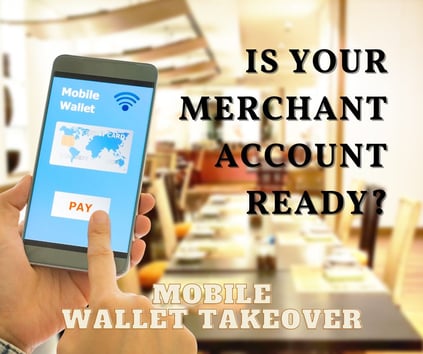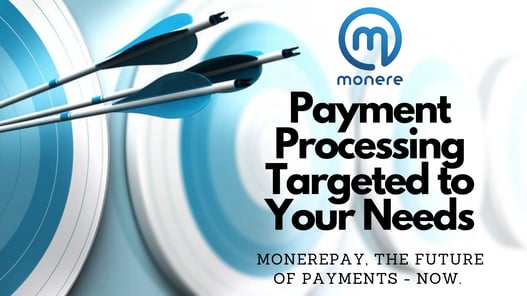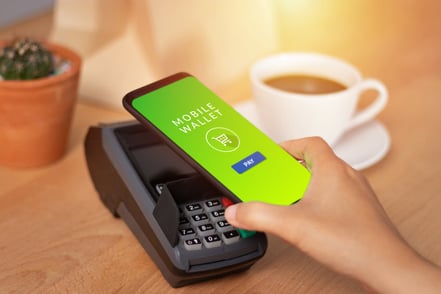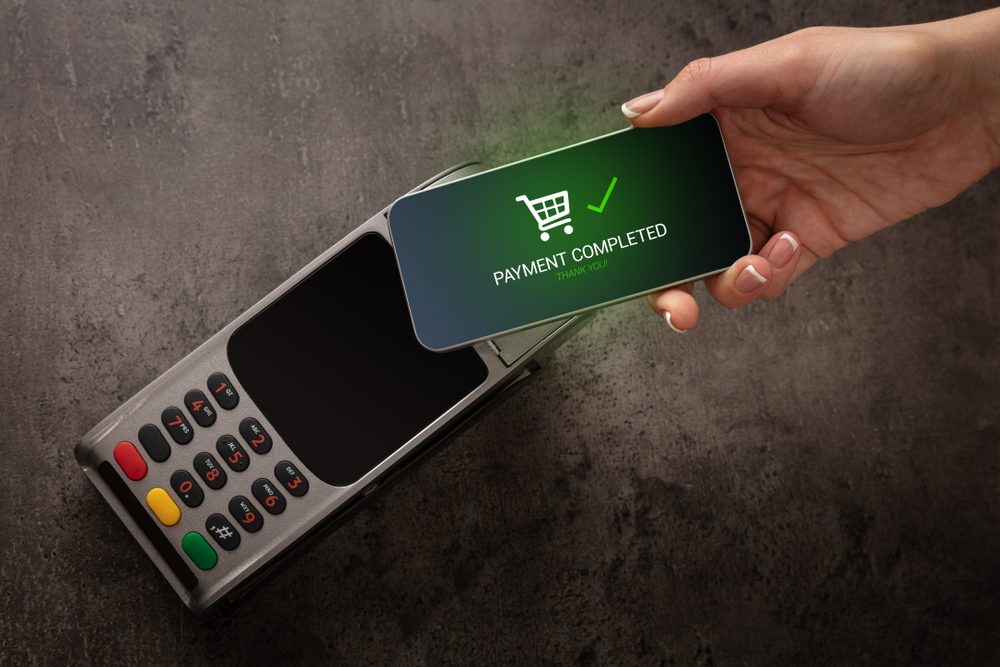 According to a report from Global Market Insights, the mobile wallet market is expected to grow from $100 billion to $250 billion by 2024. What is behind this explosive growth? Should your business start accepting mobile wallets and digital forms of payment?
According to a report from Global Market Insights, the mobile wallet market is expected to grow from $100 billion to $250 billion by 2024. What is behind this explosive growth? Should your business start accepting mobile wallets and digital forms of payment?
Today, we’re going to be answering your questions about mobile wallets and how they work. We'll also explain why accepting all forms of payment is vital for the continued growth and success of your business.
The Rise of Mobile Wallets
Digital payments made with your mobile phone can be traced back to the 1990s. Today, millions have made purchases without ever pulling out cash or a card. Instead, they simply tapped a few buttons on their phone. Both Google and Apple have been at the forefront of this innovation in payment technology. In 2011, Google released the first-ever mobile wallet. Then, in 2014, Apple released Apple Pay, a payment method that allowed users to pay for products using nothing but their smartphones. This was the beginning of mobile wallets. Although many people have been using mobile wallets, user adoption did not explode until the 2020 COVID-19 pandemic.
The pandemic drove demand for contactless payments sky-high. Suddenly, people all over the world were using their mobile phones to pay for everyday products and services. While it may have been fear that drove the rapid adoption, it was the ease and convenience that really won over consumers. Because of this, their popularity has dramatically increased. Now, it’s more critical than ever before for businesses to ensure that they have the capabilities to accept mobile wallet payments.
How Do Mobile Wallets Work?
Simply put, a mobile wallet is a digital form of storage for card information on a mobile device. This is a technology that allows you to pay with your phone. Users have appreciated both the convenience and the contactless nature of this new method of payment. Often, a mobile wallet comes in the form of a built-in feature or a downloadable app that users can install onto their smartphones. The user then enters their card information into this app, which is then connected directly to the user’s bank accounts.
The data on the mobile wallet is encrypted for security purposes and is linked to some personal information, such as a fingerprint or facial recognition. Usually, users will simply hold their phone up to the point-of-sale (POS) device, and the transaction will be completed. This is made possible using a technology known as near-field communication (NFC). Using special radio frequencies, smartphones are able to communicate wirelessly directly with the merchant’s POS device.
Most of the latest smartphones now come with NFC technology built in. Apple Pay ships as a built-in feature of all iPhones. Third-party mobile wallet applications include Google Pay and PayPal. According to eMarketer, 101.2 million Americans used mobile wallets in 2021.
The Benefits of Accepting Mobile Wallet Payments
There are many ways in which mobile wallet payment technology can help you grow your business and serve more customers.
Here are several advantages to think about:
1. Convenience
Consumers cite convenience as one of their biggest priorities for relying on mobile wallets. By accepting this form of payment, you can make your checkout process easier and more efficient for your customers. Over time, this can lead to better reviews and feedback for your business which can then lead to more conversions. Accepting mobile payments also creates more convenience for you as a business owner. By accepting mobile payments, you enable your business to process payments from anywhere, enabling you to attend special events such as conferences, festivals, or farmer’s markets.
2. Popularity
The demand for mobile wallet payments is only increasing. A November 2020 report forecasted that 760 million people globally would be mobile wallet users. In the U.S. in 2021, 101.2 million consumers over 14 years old used mobile wallets to pay for purchases. Other research shows that consumers are spending billions via mobile payments.
In fact, a recent Juniper Research study estimates digital wallet payments will exceed $10 trillion by 2025. That is almost double the $5.5 trillion made in 2020. This is not surprising when you consider that the younger generations, Gen Z and Gen Alpha, are growing up in a digitally native world. Furthermore, by appealing to this demand, you can potentially increase your sales and scale your business.
3. Competitive In Uncertain Times
The pandemic showed that businesses that weren’t able to adapt would not survive turbulent times. For retailers that were flexible, accepting contactless payment methods such as mobile wallets was one of the key ways they were able to stay in business. Mobile wallets are on the cutting edge.
Aside from convenience, the one thing consumers expect from brands is that they keep up with the latest and most innovative technology. Consumers simply expect businesses to offer the tech they use. In a recent poll, 44% of consumers overall admitted they would abandon a purchase if the store did not accept their favorite payment method.
By embracing this technology, you can position your business to be ahead of your competitors. This can be vital, as economic difficulties continue to make things difficult for organizations of all sizes.
4. Increased Profit
Customers that use mobile payment methods, on average, spend around twice as much as customers that use traditional methods. Furthermore, many customers (especially younger ones) will abandon a purchase in a brick-and-mortar store because of a lack of mobile payment options. On the other hand, digital wallet payment transactions are extremely fast. Transactions are completed in a matter of seconds, greatly reducing checkout times over cash and credit card use. This results in faster checkout times and shorter lines at the checkout. Which all result in more sales.
This further demonstrates that if your business does accept mobile wallet payments, you could unlock the door to dramatically increased profits.
5. Security
Although some consumers have hesitated to embrace mobile wallets because of a perceived lack of safety, the reality is actually the opposite. Mobile payments are some of the most secure forms of payment because the payment data is encrypted. Cash can be stolen. Credit cards can be scanned with special tools. However, it is incredibly difficult to steal money or payment data from a smartphone. First, mobile wallets do not store the actual credit card data within the phone.
Even the NFC communications that occur in the small physical space between the user’s device and the merchant’s device are encrypted. The transaction occurs using tokenization, where instead of sending credit card numbers or payment data, a unique code is created for each transaction.
Due to the biometrics usually used to secure payment data, even a stolen phone will not usually result in the theft of payment information.
The Best Way To Start Accepting Mobile Wallet Payments

If you are interested in accepting mobile wallet payments but are unsure of where to start, you’ve come to the right place. Opening a merchant account with MonerePay will give you the ability to not only accept credit cards but mobile wallet payments as well. Regardless of the size of your business, our streamlined interface provides powerful simplicity so that you can focus on doing what you do best, serving your customers.
With transaction optimization and Business Intelligence reporting, MonerePay enables you to do more than just accept payments. With our platform, you can get access to data that you can use to drive further success and growth at your business.
Our payment solutions are optimized to fully support your omni commerce platform to allow payment acceptance from anywhere, anytime. Merchants enjoy the convenience of managing their accounts from a single intuitive merchant portal.
Learn more about our cutting edge solutions today!

(1).jpg)


